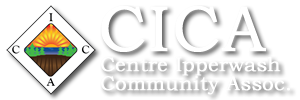Treatment
Phragmites control is a long-term endeavour. Any treatment plan should include provisions for long-term monitoring and re-treatment of new shoots as needed. The method of removal depends on site characteristics including size and if soil can support large machinery.
A number of different control techniques have been utilized to combat Phragmites with varying degrees of success:
- Herbicide Treatment is the most effective method of non-native Phragmites management and an important component of an integrated management approach. It requires follow-up herbicide treatment the following year. Individuals should NOT use herbicides unless they are licensed contractors. At this time, in Canada, there is no herbicide approved for use over water.
- Digging/Spading is only effective for the very smallest infestations due to the deep and extensive root system of Phragmites. (See attached “Wymbolwood Beach Phragmites Removal Technique” by Lynn Short, Spring 2015)
- Mowing early in the season will actually increase stand density. Later in the season it can help deplete energy reserves in Phragmites. Mowing without use of herbicide should be completed before plants start to produce seeds. Long-term research needs to be conducted on the effects of repeated mowing.
- Burning- Prescribed fire is not effective as a stand-alone management technique. It can stimulate Phragmites regrowth. It is effective for removing large amounts of standing dead biomass after herbicide treatment. It should be conducted during the dormant season following herbicide treatment. It usually requires a burn permit and close supervision. NEVER burn standing Phragmites.
- Flooding cut stems can be effective but is not feasible in many settings. It is not effective alone, but can be used to flood cut or burned stands of Phragmites. It reduces the amount of oxygen available to the plant’s rhizomes and can lead to reduced growth. It can be used as part of a multi-method approach where water levels can be controlled.
- Grazing-Long-term, low intensity grazing by goat and cattle can reduce non-native Phragmites density and increase species diversity in wetlands. It does not directly impact the root systems. Done at the wrong time of the year it can increase Phragmites vigour and stem density. Other issues are possible changes in nutrient cycling and the negative impact on remaining native plants. This method has limited support, but is an active area of research.
- Smothering cut stems for an entire growing season with a thick black plastic is not viable for treating large stands. Phragmites are capable of sending runners or rhizomes out from beneath the plastic to establish new plants. It is not suitable for native plant growth.
- Compressing or Rolling is not effective as a standalone control method. Compressing compacts the dead biomass, allowing for a more effective and efficient burn to follow. Herbicide should be applied prior to compressing and rolling ensure rhizomes and root systems have been killed.
- Wicking or Daubing is effective for small stands, and allows herbicide application to specific plants, while avoiding native vegetation. It is labour-intensive and difficult on tall stands but can be done where wind and weather conditions do not allow for spraying.
Ensure all necessary permits are obtained and regulations are followed for any treatment.
Sources:
Ontario Invasive Plant Council-Clean Equipment Protocol for Industry-Summary
Ontario Ministry of Natural Resources, Invasive Phragmites – Best Management Practices 2011
Great Lakes Phragmites Collaborative
